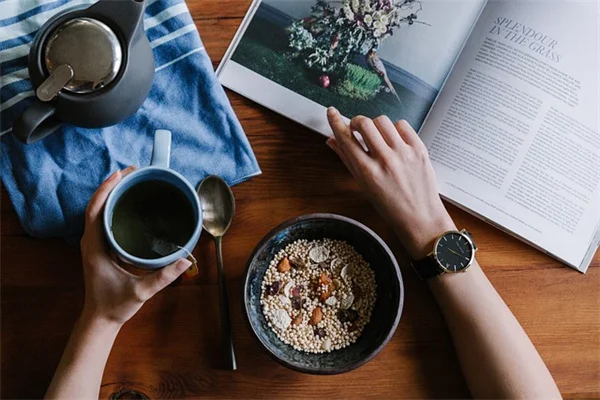Training your brain to adopt healthful habits is the key to transforming your lifestyle for the better! The good news is, your brain has an incredible ability to change and adapt, a phenomenon known as neuroplasticity. This means that you can literally reshape your brain by consistently choosing healthier behaviors. I believe that with the right strategies, anyone can shift their habits and enjoy a healthier life. So, how do we get started on this journey? In this article, I’ll guide you through practical tips and insights that can help you not only understand the science behind habit formation but also implement these changes in your daily routine. Are you ready to unlock the potential of your brain and create lasting healthful habits? Let's dive in!
E.g. :Unlock Your Brain’s Potential: 7 Games for Brain Health You Need to Try!
- 1、🧠 The Brain's Superpower: Neuroplasticity & Habit Formation
- 2、💎 The Dopamine Goldmine: Making Healthy Habits Addictive
- 3、🚧 Breaking Through the Willpower Wall
- 4、🏡 Designing Your Habit-Friendly Environment
- 5、📈 Your Personalized Habit Blueprint
- 6、FAQs
🧠 The Brain's Superpower: Neuroplasticity & Habit Formation
⚡ Your Brain is Like Play-Doh (But Way Cooler)
Did you know your brain can physically reshape itself like modeling clay? That's neuroplasticity in action! Every time you repeat a healthy behavior—whether it's choosing an apple over chips or taking the stairs—you're literally carving new neural pathways. I love how science shows us that no one is "stuck" with bad habits. Your brain wants to help you change!
Here's a fun experiment: try brushing your teeth with your non-dominant hand for a week. At first it feels awkward (trust me, I've tried!), but soon your brain adapts. That's exactly how forming new health habits works—consistent repetition teaches your brain to make the unfamiliar feel automatic. Pretty amazing, right?
🎯 The 21-66 Day Myth Buster
You've probably heard "it takes 21 days to form a habit." Well, neuroscience says otherwise! Research from University College London reveals:
| Habit Complexity | Average Formation Time |
|---|---|
| Drinking water after waking | 20 days |
| 15-minute daily walk | 36 days |
| Meditating 10 minutes daily | 58 days |
The takeaway? Be patient with yourself. I tell my clients to track habits for at least two months before expecting them to feel effortless. Remember, you're literally rebuilding your brain's wiring!
💎 The Dopamine Goldmine: Making Healthy Habits Addictive
 Photos provided by pixabay
Photos provided by pixabay
🍫 Why Your Brain Prefers Cake Over Kale
Here's a shocking fact: your brain releases 2-3 times more dopamine when eating chocolate compared to broccoli. No wonder healthy choices feel harder! But we can hack this system by creating our own "reward cocktails."
Try this: after your workout, blast your favorite song and dance like nobody's watching (I do this daily!). The combination of exercise endorphins plus musical joy creates a dopamine surge that makes your brain crave future workouts. Pro tip: pair new healthy habits with existing pleasures—listen to podcasts while meal prepping or watch Netflix on the treadmill.
🔍 The Secret Your Gym Teacher Never Told You
Did you know the best time to reinforce a habit is immediately after completing it? Here's why:
When you finish a healthy activity, your brain enters a brief "open window" where it's deciding whether to remember this behavior. I teach clients to use this moment strategically—take 10 seconds to acknowledge your effort ("Nice job, me!") or do a quick victory dance. These micro-celebrations cement the habit faster than waiting until bedtime to reflect.
Think about it—when you check social media, you get instant likes and comments. We need to give our healthy habits that same immediate gratification!
🚧 Breaking Through the Willpower Wall
🤔 Why "Just Say No" Never Works
Ever notice how telling yourself "Don't eat the cookies!" makes you obsess about cookies? That's because your brain can't process negatives. Try this reframe instead:
Instead of: "I won't snack after dinner"
Say: "After dinner, I'll enjoy my special peppermint tea"
This works because your brain focuses on the positive action rather than resisting temptation. I keep "habit replacement cards" in my kitchen with these types of swaps—they've been game-changers for me and my clients!
 Photos provided by pixabay
Photos provided by pixabay
🍫 Why Your Brain Prefers Cake Over Kale
Here's my favorite impulse control trick: when temptation strikes, count backwards from 5 out loud. Why does this work?
1. It engages your prefrontal cortex (your brain's "CEO")
2. The counting creates a buffer between impulse and action
3. Speaking aloud adds an extra layer of awareness
I've used this at parties when eyeing the dessert table—by the time I reach "1," I'm usually reaching for the fruit platter instead. Give it a try next time you're debating skipping your workout!
🏡 Designing Your Habit-Friendly Environment
👀 The Visibility Principle
What if I told you that simply moving your fruit bowl could double your fruit consumption? It's true! Studies show we're 3 times more likely to eat food we see versus what's hidden.
My kitchen makeover:
- Moved fruits to countertop in clear bowls
- Put unhealthy snacks in opaque containers in hard-to-reach cabinets
- Placed workout clothes right on my bedside table
Small changes like these leverage your brain's tendency to choose the path of least resistance. Out of sight really is out of mind!
👯 The Buddy System Upgrade
Having an accountability partner is great, but let's supercharge it! Instead of just checking in weekly, try these innovative approaches:
- Friendly competition: Who can log more workout minutes this month?
- Skill-sharing: Swap healthy recipes or workout tips
- Virtual co-working: Video chat while meal prepping together
My neighbor and I have "walking meetings" every Thursday—we solve work problems while getting our steps in. Two birds, one stone!
📈 Your Personalized Habit Blueprint
 Photos provided by pixabay
Photos provided by pixabay
🍫 Why Your Brain Prefers Cake Over Kale
Ever set a goal that was too ambitious and gave up? Me too! That's why I created this simple framework:
Your goal should be:
1. Specific enough to measure ("Walk 7,000 steps daily")
2. Challenging enough to excite you
3. Achievable enough to maintain
For example, when I started meditating, I began with just 2 minutes daily—so easy I couldn't say no! Now I'm up to 15 minutes. Small wins create big changes over time.
📊 The Habit Tracker Hack
Want to know the secret weapon of habit masters? Tracking! But forget boring spreadsheets—make it fun:
- Use colorful stickers on a calendar
- Try the "don't break the chain" method
- Get a habit-tracking app with satisfying check-off sounds
I keep a "victory jar" where I drop in a note about each healthy choice. On tough days, I read them for motivation. Seeing physical proof of progress works wonders!
Remember, you're not just changing habits—you're upgrading your brain's operating system. Every healthy choice is like installing a new piece of software that makes future choices easier. What one small change will you make today?
In this journey of training your brain to adopt healthful habits, we've uncovered some exciting insights about how our minds can reshape themselves for better choices. From understanding neuroplasticity to recognizing the power of immediate rewards, it's clear that our brains are eager to support us in this transformation. Remember, patience is key; as we discussed, it can take time to develop these new habits, but with consistent effort, they will become second nature.
I encourage you to take action today! Start by implementing one of the strategies we've talked about, whether it’s tracking your habits or creating a more inviting environment for your healthy choices. Don't forget to celebrate those small victories along the way! Also, I’d love to hear your thoughts—drop a comment below or share your progress on social media. Together, we can motivate each other to keep moving forward on this path to health.
As we continue to explore the science of habit formation, consider looking into related topics like mindfulness practices or the role of nutrition in brain health. Each of these areas can further enhance our ability to make positive changes and embrace a healthier lifestyle. Let’s keep the conversation going and support each other in this exciting journey!
E.g. :Training Your Brain To Adopt Healthful Habits: Mastering The Five ...
FAQs
What is neuroplasticity and how does it relate to habit formation?
Neuroplasticity is the brain's amazing ability to change and adapt physically. Every time you repeat a healthy behavior, like opting for an apple instead of chips, you're creating new neural pathways. This means that you're not stuck with bad habits—your brain is always ready to help you change! By consistently practicing new habits, you're retraining your brain to make those behaviors feel automatic over time.












